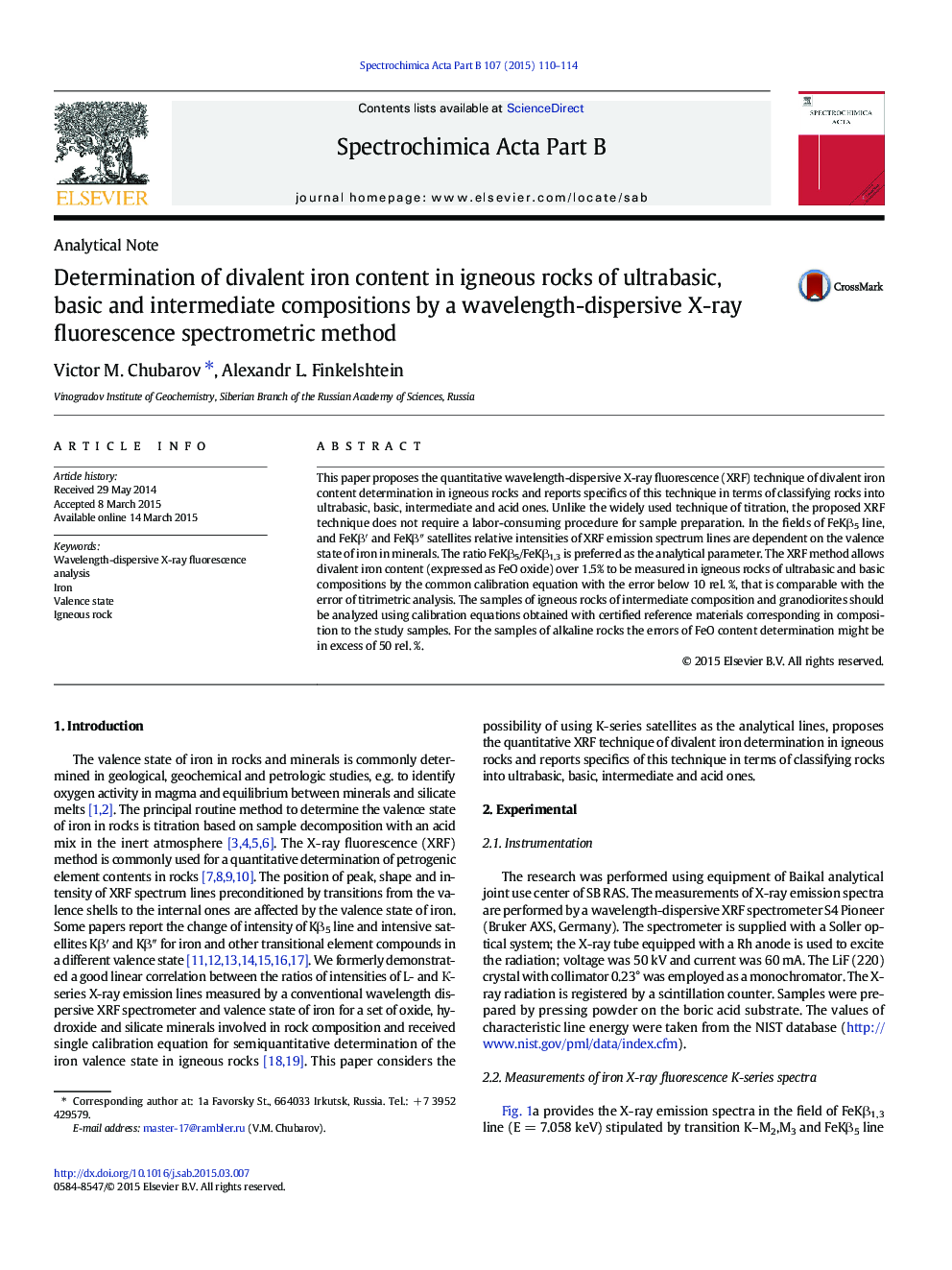| Article ID | Journal | Published Year | Pages | File Type |
|---|---|---|---|---|
| 1239638 | Spectrochimica Acta Part B: Atomic Spectroscopy | 2015 | 5 Pages |
•The wavelength-dispersive X-ray fluorescence method allows the determination of divalent iron contents.•Separate calibrations should be used for different types of igneous rocks.•Errors of X-ray fluorescence method and titrimetric analysis are comparable.
This paper proposes the quantitative wavelength-dispersive X-ray fluorescence (XRF) technique of divalent iron content determination in igneous rocks and reports specifics of this technique in terms of classifying rocks into ultrabasic, basic, intermediate and acid ones. Unlike the widely used technique of titration, the proposed XRF technique does not require a labor-consuming procedure for sample preparation. In the fields of FeKβ5 line, and FeKβ′ and FeKβ″ satellites relative intensities of XRF emission spectrum lines are dependent on the valence state of iron in minerals. The ratio FeKβ5/FeKβ1,3 is preferred as the analytical parameter. The XRF method allows divalent iron content (expressed as FeO oxide) over 1.5% to be measured in igneous rocks of ultrabasic and basic compositions by the common calibration equation with the error below 10 rel. %, that is comparable with the error of titrimetric analysis. The samples of igneous rocks of intermediate composition and granodiorites should be analyzed using calibration equations obtained with certified reference materials corresponding in composition to the study samples. For the samples of alkaline rocks the errors of FeO content determination might be in excess of 50 rel. %.
